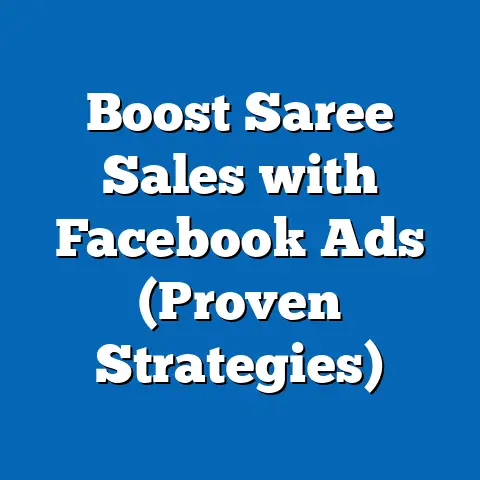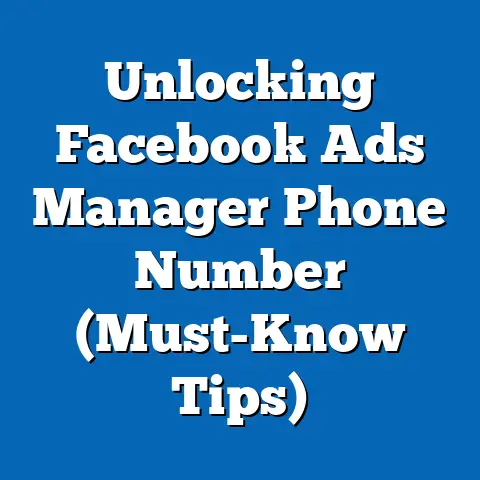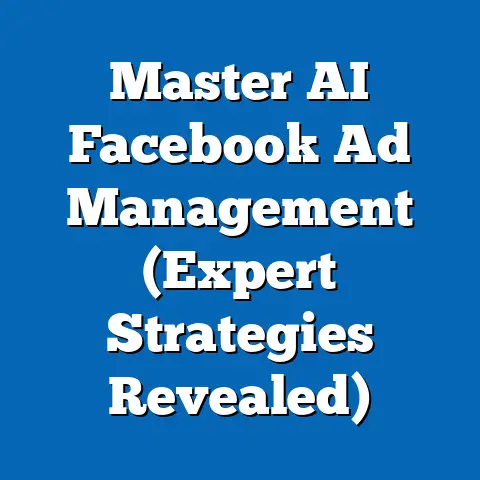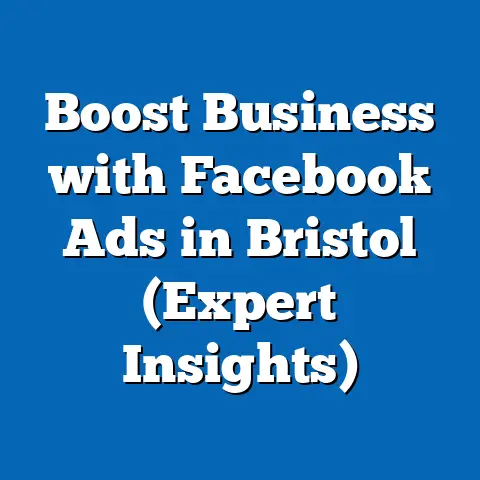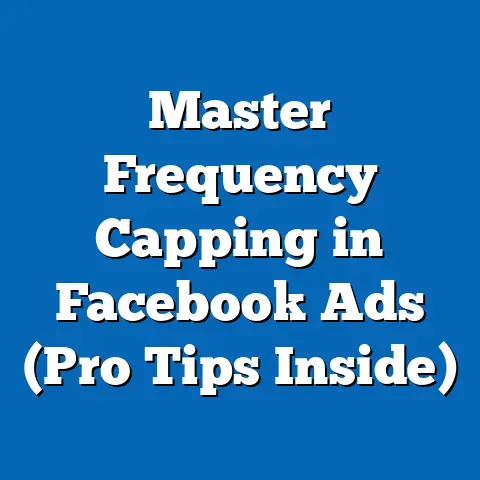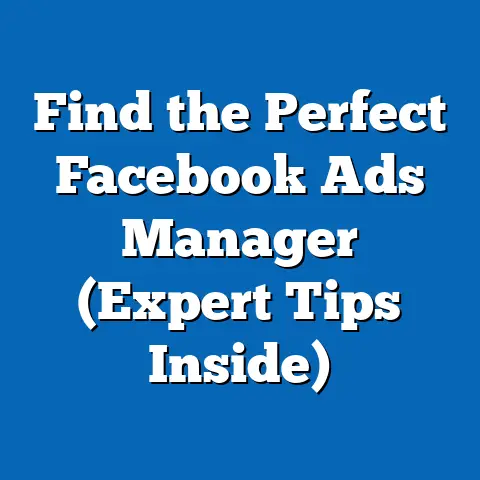Master Facebook Ad Funnels (Proven Strategies Revealed)
Have you ever felt like you’re throwing money into a black hole with Facebook ads? I get it. I’ve been there. You see all these gurus talking about amazing results, but your own campaigns seem to fall flat. You’re tweaking targeting, changing creatives, and still… crickets. The truth is, a lot of entrepreneurs struggle to understand the intricacies of ad funnels, feeling lost in a sea of strategies and tactics. They end up in a frustrating cycle of trial and error, wasting valuable budget and missing out on HUGE opportunities. Without a solid grasp of how to build and optimize a Facebook ad funnel, it’s easy to feel like you’re just spinning your wheels.
But here’s the good news: it doesn’t have to be this way. By understanding the principles of Facebook ad funnels and implementing proven strategies, you can transform your advertising from a cost center into a revenue-generating machine. In this guide, I’m going to break down the complexities and reveal the secrets to creating Facebook ad funnels that actually work. I’ll guide you through each stage, from awareness to conversion, and show you how to optimize your campaigns for maximum impact. Let’s dive in!
Understanding the Basics of Facebook Ad Funnels
Before we get into the nitty-gritty, let’s define what a Facebook ad funnel actually is. In simple terms, a Facebook ad funnel is a strategic process designed to guide potential customers through a series of interactions with your brand, ultimately leading them to a purchase or desired action. Think of it like a personalized journey. You’re not just blasting ads at everyone; you’re carefully crafting a path that nurtures prospects from initial awareness to becoming loyal customers.
Why Ad Funnels Matter
Ad funnels are crucial because they recognize that not everyone is ready to buy right away. Imagine walking into a car dealership and being immediately pressured to sign on the dotted line. Chances are, you’d walk right out. The same applies online. People need time to learn about your brand, understand your value proposition, and build trust. An ad funnel allows you to build that relationship over time, increasing the likelihood of conversion.
Think about it this way: you wouldn’t propose marriage on a first date, right? Building a customer relationship is similar. You start with an introduction, then move on to deeper conversations, and eventually, you get to the “commitment” stage (the purchase).
The Three Stages of a Facebook Ad Funnel
Most Facebook ad funnels are structured around three key stages:
- Awareness (Top of Funnel – TOFU): This is where you introduce your brand to a new audience. The goal is to grab their attention and make them aware that you exist.
- Consideration (Middle of Funnel – MOFU): At this stage, you nurture prospects by providing valuable information and building trust. You want them to consider your product or service as a solution to their needs.
- Conversion (Bottom of Funnel – BOFU): This is where you encourage prospects to take action and become customers. You’re focused on driving sales, leads, or other desired outcomes.
Here’s a simple table summarizing the stages:
| Stage | Goal | Content/Ad Examples |
|---|---|---|
| Awareness | Introduce your brand to a new audience | Engaging videos, informative blog posts, entertaining content, brand awareness ads |
| Consideration | Nurture prospects and build trust | Retargeting ads, lead magnets (eBooks, webinars), case studies, testimonials, product demos |
| Conversion | Drive sales and desired actions | Discount offers, limited-time promotions, free trials, direct response ads with strong calls to action, ads showcasing social proof (reviews, testimonials, user-generated content) |
| Stage | Goal | Content/Ad Examples |
|---|---|---|
| Awareness | Introduce your brand to a new audience | Engaging videos, informative blog posts, entertaining content, brand awareness ads |
| Consideration | Nurture prospects and build trust | Retargeting ads, lead magnets (eBooks, webinars), case studies, testimonials, product demos |
| Conversion | Drive sales and desired actions | Discount offers, limited-time promotions, free trials, direct response ads with strong calls to action, ads showcasing social proof (reviews, testimonials, user-generated content) |
Takeaway: Understanding the basics of Facebook ad funnels – what they are, why they matter, and the different stages involved – is the foundation for building successful campaigns. Now let’s move on to crafting your strategy.
Crafting Your Funnel Strategy
Building a successful Facebook ad funnel isn’t just about throwing ads together. It requires a well-thought-out strategy that aligns with your business goals and target audience. Here are the essential components you need to consider:
1. Audience Targeting: Know Your People
This is arguably the MOST important aspect of your funnel. You can have the best ad copy and stunning visuals, but if you’re showing them to the wrong people, you’re wasting your time and money. Facebook offers incredible targeting options, allowing you to reach specific demographics, interests, behaviors, and even connections.
- Core Audiences: These are built using Facebook’s demographic, interest, and behavioral targeting options. Think about your ideal customer: What are their age, gender, location, interests, job titles, and behaviors?
- Custom Audiences: These are created from your own data sources, such as your website traffic, email list, or customer database. This is where retargeting comes in, allowing you to re-engage people who have already interacted with your brand.
- Lookalike Audiences: This is where the magic happens! Facebook analyzes your existing custom audiences (e.g., your customer list) and finds new people who share similar characteristics. This is a powerful way to expand your reach and find highly qualified prospects.
Example: Let’s say you sell organic baby food.
- Core Audience: You might target parents aged 25-45, interested in organic food, healthy eating, parenting blogs, and baby products.
- Custom Audience: You could create a custom audience of people who have visited your website or signed up for your email list.
- Lookalike Audience: You could create a lookalike audience based on your existing customers, targeting people who share similar demographics, interests, and purchasing behaviors.
Tip: Don’t be afraid to experiment with different targeting options. A/B test your audiences to see which ones perform best.
2. Ad Creatives: Capture Attention with Compelling Visuals
Your ad creatives are the first thing people see, so they need to be eye-catching, relevant, and engaging. Facebook offers a variety of ad formats:
- Images: Simple, clean, and visually appealing. Use high-quality images that showcase your product or service.
- Videos: Highly engaging and effective for storytelling. Use short, attention-grabbing videos that capture your audience’s interest.
- Carousels: Allow you to showcase multiple products or features in a single ad. Great for e-commerce businesses.
- Collections: Similar to carousels but designed for mobile shopping. Allow users to browse and purchase products directly from the ad.
- Instant Experiences (formerly Canvas): Full-screen, mobile-optimized experiences that immerse users in your brand story.
Choosing the Right Format:
- Awareness: Videos and visually appealing images work well for capturing attention and building brand awareness.
- Consideration: Carousels and collections can showcase multiple products or features, while videos can provide more in-depth information.
- Conversion: Images and videos that highlight the benefits of your product or service and include a clear call to action are effective.
Tip: Invest in professional-quality images and videos. They can make a HUGE difference in your ad performance.
3. Messaging: Speak to Your Audience’s Needs
Your ad copy should be tailored to resonate with your audience at each stage of the funnel. What motivates them? What are their pain points? What are they looking for?
- Awareness: Focus on grabbing attention and introducing your brand. Use compelling headlines and engaging storytelling.
- Consideration: Provide valuable information and build trust. Highlight the benefits of your product or service and address common concerns.
- Conversion: Create a sense of urgency and encourage action. Use strong calls to action and highlight limited-time offers or discounts.
Example: Let’s go back to our organic baby food example.
- Awareness: “Tired of processed baby food? Discover the goodness of organic ingredients.”
- Consideration: “Learn how our organic baby food can help your little one thrive with essential nutrients.”
- Conversion: “Get 20% off your first order of organic baby food! Give your baby the best start in life.”
Takeaway: Crafting a winning funnel strategy involves understanding your audience, creating compelling ad creatives, and tailoring your messaging to each stage of the funnel.
Building the Awareness Stage
The awareness stage is all about introducing your brand to a new audience. You want to capture their attention and make them aware that you exist. Think of it as planting seeds. You’re not expecting immediate results, but you’re setting the stage for future growth.
Strategies for Creating Awareness Ads
- Focus on Value: Don’t try to sell anything at this stage. Instead, focus on providing value and building trust. Share informative blog posts, engaging videos, or entertaining content that resonates with your target audience.
- Use Visuals: Eye-catching visuals are crucial for capturing attention. Use high-quality images and videos that showcase your brand’s personality and values.
- Target Broadly: At this stage, you can afford to target a broader audience. Use Facebook’s interest and demographic targeting options to reach people who are likely to be interested in your product or service.
- Run Brand Awareness Campaigns: Facebook offers a specific campaign objective called “Brand Awareness,” which is designed to maximize reach and frequency. This is a great option for building brand recognition.
Types of Content That Work Well
- Educational Posts: Share informative articles, blog posts, or infographics that address your target audience’s pain points.
- Engaging Videos: Create short, attention-grabbing videos that showcase your brand’s personality and values.
- Entertaining Content: Share funny memes, relatable stories, or entertaining videos that resonate with your target audience.
- Behind-the-Scenes Content: Give your audience a glimpse into your company culture and values.
Example: Our organic baby food company could create a video showcasing the process of sourcing organic ingredients from local farms.
Maximizing Reach and Engagement
- Lookalike Audiences: As mentioned earlier, lookalike audiences are a powerful way to expand your reach and find highly qualified prospects.
- Interest Targeting: Use Facebook’s interest targeting options to reach people who are interested in topics related to your product or service.
- Run Contests and Giveaways: Contests and giveaways are a great way to generate buzz and increase engagement.
- Engage with Comments and Messages: Respond to comments and messages promptly to build relationships with your audience.
Takeaway: The awareness stage is all about planting seeds and building brand recognition. Focus on providing value, using engaging visuals, and targeting a broad audience.
Nurturing the Consideration Stage
Once you’ve captured your audience’s attention, it’s time to nurture them and move them from awareness to consideration. This stage is all about building trust and demonstrating the value of your product or service.
Retargeting Techniques
Retargeting is a crucial component of the consideration stage. It allows you to re-engage users who have already interacted with your ads or website.
- Website Visitors: Retarget people who have visited specific pages on your website.
- Ad Engagers: Retarget people who have interacted with your ads (e.g., liked, commented, shared).
- Video Viewers: Retarget people who have watched a certain percentage of your videos.
- Email Subscribers: Retarget people who are on your email list but haven’t yet made a purchase.
Example: You could retarget people who visited your organic baby food product page but didn’t add anything to their cart.
Lead Magnets
Lead magnets are valuable resources that you offer in exchange for contact information, such as an email address. This is a great way to build your email list and nurture prospects over time.
- eBooks: Offer a free eBook on a topic related to your product or service.
- Webinars: Host a live webinar on a topic that your target audience is interested in.
- Checklists: Create a helpful checklist that provides actionable steps.
- Templates: Offer a free template that your target audience can use.
- Free Trials: Offer a free trial of your product or service.
Example: Our organic baby food company could offer a free eBook on “The Ultimate Guide to Introducing Solids to Your Baby.”
Showcase Social Proof
Social proof, such as testimonials, reviews, and case studies, can be incredibly effective at building trust and demonstrating the value of your product or service.
- Testimonials: Share positive testimonials from satisfied customers.
- Reviews: Highlight positive reviews from third-party websites.
- Case Studies: Showcase how your product or service has helped other customers achieve their goals.
- User-Generated Content: Encourage your customers to share photos and videos of themselves using your product or service.
Takeaway: The consideration stage is all about nurturing prospects and building trust. Use retargeting techniques, offer valuable lead magnets, and showcase social proof to move people closer to a purchase.
Driving Conversions with the Bottom of the Funnel
This is the moment you’ve been working towards: driving conversions and turning prospects into paying customers. The bottom of the funnel (BOFU) is all about creating a sense of urgency and compelling users to take action.
Strategies for Conversion-Focused Ads
- Highlight Benefits, Not Just Features: Focus on how your product or service solves a problem or makes life easier.
- Use Strong Calls to Action (CTAs): Tell people exactly what you want them to do: “Buy Now,” “Get Started,” “Sign Up Today.”
- Create Urgency: Use limited-time offers, countdown timers, or scarcity tactics to encourage immediate action.
- Offer a Guarantee: Reduce risk by offering a money-back guarantee or satisfaction guarantee.
- Optimize Landing Pages: Make sure your landing pages are optimized for conversion. They should be clear, concise, and easy to navigate.
The Power of Social Proof (Again!)
Even at the conversion stage, social proof plays a critical role. People are more likely to buy if they see that others have had positive experiences.
- Display Reviews and Ratings: Show star ratings and positive reviews directly in your ads.
- Use Testimonial Videos: Short video testimonials from happy customers can be incredibly persuasive.
- Showcase Case Studies: Highlight specific examples of how your product or service has helped others achieve their goals.
Facebook Pixel and Conversion Tracking
The Facebook Pixel is a crucial tool for tracking conversions and optimizing your campaigns. It allows you to see which ads are driving the most sales and leads, so you can focus your budget on what’s working best.
- Install the Pixel: Make sure the Facebook Pixel is installed on your website.
- Track Conversions: Set up conversion tracking to track specific actions, such as purchases, leads, or sign-ups.
- Optimize for Conversions: Use the “Conversions” campaign objective to optimize your ads for conversions.
Takeaway: The conversion stage is all about driving action. Use strong calls to action, create a sense of urgency, and optimize your ads for conversions using the Facebook Pixel.
Analyzing and Optimizing Your Funnel
Building a Facebook ad funnel is an ongoing process. You can’t just set it and forget it. You need to constantly analyze your results and optimize your campaigns to improve performance.
Key Performance Indicators (KPIs) to Monitor
- Reach: The number of people who saw your ads.
- Impressions: The number of times your ads were displayed.
- Engagement: The number of likes, comments, shares, and clicks your ads received.
- Click-Through Rate (CTR): The percentage of people who clicked on your ads.
- Cost Per Click (CPC): The average cost you paid for each click on your ads.
- Conversion Rate: The percentage of people who took the desired action (e.g., purchase, lead, sign-up).
- Cost Per Conversion (CPC): The average cost you paid for each conversion.
- Return on Ad Spend (ROAS): The amount of revenue you generated for every dollar you spent on ads.
A/B Testing
A/B testing is a powerful technique for comparing different ad copies, creatives, and targeting options.
- Test One Variable at a Time: Only change one element at a time so you can accurately measure the impact of that change.
- Use Facebook’s A/B Testing Tool: Facebook offers a built-in A/B testing tool that makes it easy to create and run tests.
- Analyze Results: Track the results of your A/B tests and use the data to inform your optimization decisions.
Example: You could A/B test two different headlines for your awareness ads to see which one generates the most engagement.
Tip: Don’t be afraid to experiment! The more you test, the more you’ll learn about what works best for your audience.
Takeaway: Analyzing your results and optimizing your campaigns is crucial for maximizing your ROI. Monitor your KPIs, A/B test different elements, and use the data to inform your decisions.
Common Mistakes to Avoid
Creating a successful Facebook ad funnel takes time and effort, and it’s easy to make mistakes along the way. Here are some common pitfalls to avoid:
- Neglecting Mobile Optimization: Most Facebook users access the platform on their mobile devices. Make sure your ads and landing pages are optimized for mobile.
- Failing to Segment Audiences Properly: Don’t target everyone with the same message. Segment your audiences based on their interests, behaviors, and stage in the funnel.
- Ignoring Ad Fatigue: If you’re showing the same ads to the same people over and over again, they’ll start to tune them out. Refresh your creatives and messaging regularly.
- Not Tracking Conversions: If you’re not tracking conversions, you have no idea which ads are actually driving results. Make sure the Facebook Pixel is installed and properly configured.
- Giving Up Too Soon: Building a successful Facebook ad funnel takes time. Don’t get discouraged if you don’t see results immediately. Keep testing, optimizing, and refining your campaigns.
Takeaway: Avoid these common mistakes to set yourself up for success. Remember to optimize for mobile, segment your audiences, refresh your creatives, track conversions, and be patient.
Conclusion
Mastering Facebook ad funnels is essential for driving business success in today’s digital landscape. It’s not about blindly throwing money at ads; it’s about strategically guiding potential customers through a personalized journey that builds trust and ultimately leads to a purchase.
I know this can seem daunting, but you’re not alone. Many entrepreneurs face the same challenges when venturing into the world of Facebook advertising. But by implementing the strategies I’ve discussed, you can transform your advertising efforts into a powerful revenue-generating machine.
Remember to:
- Understand the Basics: Know the stages of the funnel and why they matter.
- Craft Your Strategy: Target the right audience, create compelling creatives, and tailor your messaging.
- Build Each Stage: Focus on providing value, nurturing prospects, and driving conversions.
- Analyze and Optimize: Track your results, A/B test different elements, and refine your campaigns.
- Avoid Common Mistakes: Optimize for mobile, segment your audiences, refresh your creatives, and track conversions.
The journey may be challenging, but the results are well worth the effort.
Call to Action
Ready to take the first step towards mastering your Facebook ad funnels? Start by identifying your target audience and crafting compelling ad creatives for the awareness stage. Don’t be afraid to experiment and test different approaches. And remember, I’m here to support you along the way. Share your experiences in the comments below or seek further resources to enhance your understanding and implementation of these strategies. Let’s transform your Facebook advertising into a powerful engine for growth!

